#tooth taxon
Text
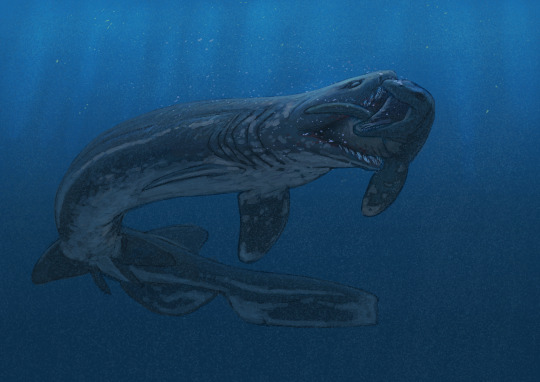
Another sketch brought to you by #paleostream
Rolfodon is a giant relative of the modern frilled shark, large enough to eat small or juvenile mosasaurs.
342 notes
·
View notes
Text
shaking and crying and screaming because all we have of the sabercat who lived alongside pachypanthera is one(1) broken tooth so we can’t know what she was….

who are you what is your story
#looks like a more basal taxon imo#machairodus or dinofelis?#tooth isn’t particularly thin laterally from what i can tell (these photos dont show the lateral width clearly tho sadly)#but overall me and my paleo major buddy both agree this is more of a basal puncturing tooth and less of a derived stabbing tooth#this is from thailand btw if anyone knows of any machairodont genera that have been confirmed in southeast asia lmk
2 notes
·
View notes
Text
Taxon Tuesday #6: Felidae

Felidae is the cat family. It contains all 36 extant cat species and their closely-related but unfortunately extinct comrades in genera such as Smilodon (a famous saber-toothed kitty). Some unifying traits among felids are: short faces, hypercarnivory (diet of 70%+ meat), large eyes adapted for dim light, retractable claws, highly sensitive ears, and solitary lifestyles. (There are obviously some exceptions...cheetahs have lost the ability to retract their claws, and lions live in complex social groups.)
Felidae is nested in the suborder Feliformia, alongside other cat-like carnivores such as hyenas, civets, and the fossa. Feliformia then combines with Caniformia (dog-like carnivores) to produce the order Carnivora.
The cat species of today are found across 14 genera, and partitioned into 8 lineages. One of those lineages belongs to the subfamily called Pantherinae, the big cats. The other seven are members of Felinae, the kitty cats. Extinct genera in Felidae include (but are certainly not limited to) Homotherium, Nimravides, Dinofelis, Miopanthera, and Proailurus, though their positions in the modern cat tree are still uncertain.
(In the graphic below, “+” indicates an extinct group.)
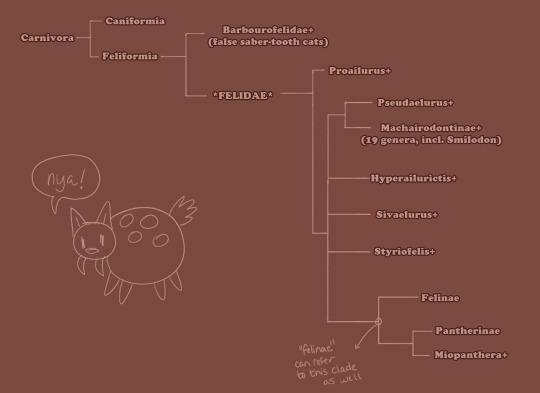
Sources Used:
https://en.wikipedia.org/wiki/Felidae
https://en.wikipedia.org/wiki/Machairodontinae
The Princeton Encyclopedia of Mammals (Macdonald, 2009)
4 notes
·
View notes
Note
Do you have a least favorite dinosaur?
Honestly not really
I guess a fragmentary tooth taxon but I wouldn't be able to name it off the top of my head
150 notes
·
View notes
Text
It Came From The Wastebasket #05: The Trouble With Troodon
Troodontids were small bird-like theropod dinosaurs, lightly built with slender legs and sickle-shaped "raptor" claws on the second toes of their feet. They had fairly big brains proportional to their body size, rather like modern birds, and their large forward-facing eyes had good depth perception. Owl-like asymmetrical ears in some species gave them a very keen sense of hearing, suggesting they may have been nocturnal hunters using sound to pinpoint the location of small prey.
The original specimen of the namesake of the group, Troodon formosus, was a serrated tooth discovered in the 1850s, about 77 million years old and originating from the Late Cretaceous Judith River Formation fossil beds in Montana, USA. It was so little to work with that it was initially mistaken for a lizard tooth, then during the 20th century it was recognized as belonging to a dinosaur and spent time classified as a megalosaurid, then a pachycephalosaur, then finally as a small theropod similar to the Mongolian Saurornithoides.
In the late 1980s it was merged together with multiple other troodontids (including Stenonychosaurus of speculative "dinosauroid" fame), and since Troodon had been the first of all of them to be named it took priority as the genus name.
And then for a while every single Late Cretaceous troodontid specimen from North America was also lumped into Troodon, turning it into a wastebasket taxon.

The problem was that all these troodontids came from locations separated by thousands of kilometers and millions of years of time, and it's unlikely that they all actually represented just one single species. But they were only known from rare fragmentary remains, making distinguishing them from each other difficult, and the original Troodon tooth didn't really have any distinctive features either – it turns out most troodontid teeth all look exactly the same!
It was becmoning increasingly dubious whether Troodon was even a valid name at all, and during the 2010s several paleontologists began trying to sort the mess out. The old names Pectinodon and Stenonychosaurus were revived, and some 'Troodon' fossils were also split off and given completely new names, becoming Albertavenator and Latenivenatrix*.
* Although Latenivenatrix might not actually be distinct enough from Stenonychosaurus to justify having a separate name.
As of 2022, Troodon itself is now in a sort of taxonomic limbo, with some paleontologists abandoning it as a dubious name while others are still arguing in favor of continuing to use it. The name could potentially be properly rescued if the original tooth can be clearly linked to better fossil material, letting Troodon take over priority again from one of the other better-established troodontids, or by defining a new type species similar to what happened with Iguanodon.
…But with how incredibly generic that tooth is, both of those options would be very difficult.
———
Nix Illustration | Tumblr | Twitter | Patreon
#it came from the wastebasket#wastebasket taxon#taxonomy#troodon#stenonychosaurus#pectinodon#albertavenator#latenivenatrix#troodontid#maniraptora#theropod#dinosaur#paleontology#art#science illustration#paleoart#palaeoblr
629 notes
·
View notes
Text
Baru iylwenpeny: The Last Baru
Happy to announce that there's just been a major new publication for mekosuchines. The Alcoota Baru, which I briefly touched upon in my post on the genus, has finally been named.
The new name, Baru iylwenpeny (pronounced eel-OON-bin-yah), derives from the Eastern Anmatyerr dialect (part of the Arrernte language) and means "good at hunting". A name that seems quite fitting when you look at the skull.
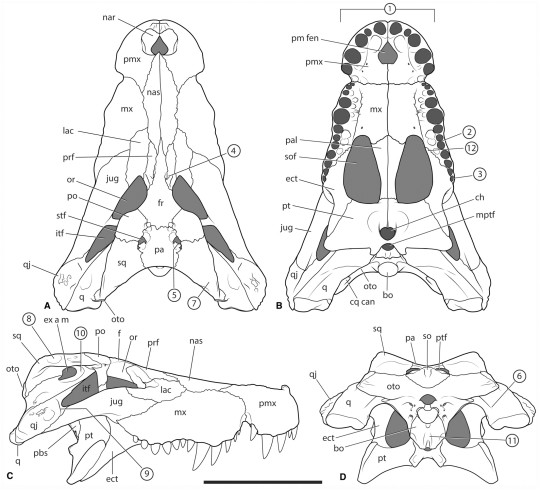
As a reminder, this animal stems from the Alcoota Fossil Site in Australia and dates to the Late Miocene, making it the youngest of the three recognized Baru species.
Previously this species was already referred to as being "the most robust Baru" and they weren't kidding. This thing looks more like something out of the Cretaceous than an animal that lived a mere 8 million years ago.
The morphology is interesting in many ways. Many of the ridges that are so prominent in Baru wickeni and less developed in Baru darrowi are absent. The seventh and eight tooth are so close they theres basically no space. Instead of four teeth like other Baru it has five in each premaxilla and the nasals reach the nares, like in Baru wickeni but unlike in Baru darrowi. The teeth also show the same small serrations as Baru darrowi and, unlike either of the other species, the jaws appear much less wavy not because they are but because the first festoon of the maxilla is followed up by a second one so developed it makes the first look almost flat.
It's a fascinating mosaic of characters that makes its relation to the other species a puzzling question. You'd think that the ridges for instance point at it being derived? After all wouldn't it make sense? Baru wickeni had the most developed rigdes, Baru darrowi smaller ones and Baru iylwenpeny none. Plus, the teeth of Baru wickeni are smooth unlike those of later forms. Yet at the same time....
The fact that it has five teeth instead of four and the fact that the nasals reach the nares are both ancestral traits, so you'd expect it to be closer to the base.
Left: Baru wickeni
Right: Baru darrowi
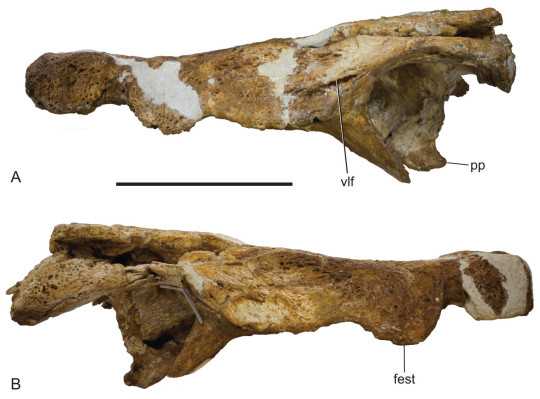
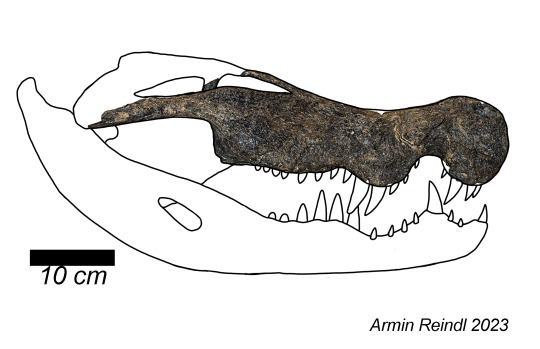
Well, while I think this isn't going to be the final place of this species among Baru, the most recent phylogenetic analysis suggests that Baru iylwenpeny was weirdly enough the basalmost species. Which means that it must have split from the other two species at the latest during the Late Oligocene and outlived the both of them without us ever knowing.
The paper also discusses how these animals may have gone extinct. If you look back at Kalthifrons, you might remember how I mentioned that mekosuchines kinda had a drop in diversity when transitioning from the Miocene to Pliocene. While the new paper avoids calling this a drop in diversity, it does highlight that there certainly was a turnover in fauna.
The reason is an old enemy of mekosuchines. Climate.
Yates and colleagues suggest that Australia was hit by an especially nasty dry period at the end of the Miocene, severe enough to drive Baru to its death but not severe enough to whipe out all mekosuchines. And after Baru was gone, Kalthifrons and Paludirex moved into the open niche.
There's also a final little piece of information that's not focused on yet really fascinating. Baru iylwenpeny had a friend. At least one other croc lived at the Alcoota site during the Late Miocene and tho it hasn't been studied in full yet, one thing is apparently known. It was a relative to the Bullock Creek taxon that coexisted with Baru darrowi and a relative to "Baru" huberi, the small croc that coexisted with Baru wickeni. This grouping has yet to be given a name, but its fascinating to me that each Baru species seemingly coexisted with a much smaller mekosuchine. Alas, like Baru this lineage seems to have fallen victim to climate change.
Baru wickeni and "Baru" huberi, in truth an unnamed genus.
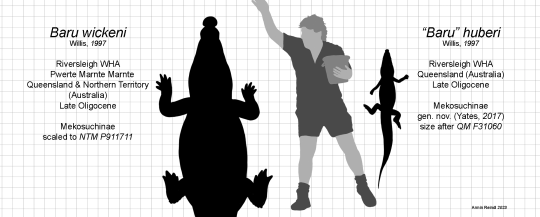
The paper is accessible here for those that wan't to dive deeper into the matter. I'll also be working on an updated size chart, this time featuring all three species of Baru, tho I can already tell you that despite being more robust its surprisingly not that much larger.
The last Baru (Crocodylia, Mekosuchinae): a new species of ‘cleaver‐headed crocodile’ from central Australia and the turnover of crocodylians during the Late Miocene in Australia (wiley.com)
#baru#baru iylwenpeny#alcoota baru#alcoota fossil site#miocene#paleontology#palaeoblr#crocs#crocodile#mekosuchinae#paleontology news#prehistory
99 notes
·
View notes
Text
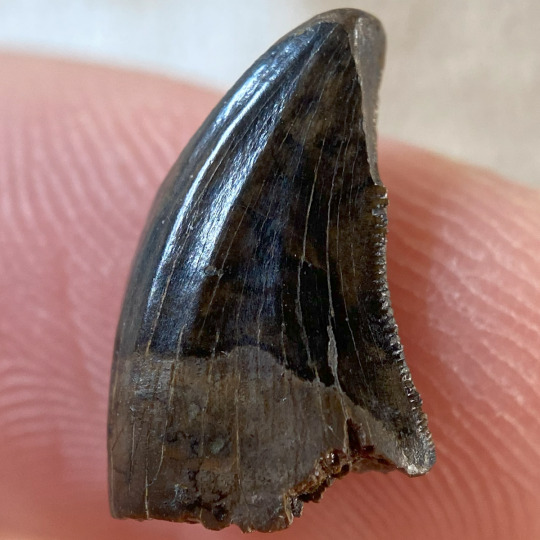
A dinosaur tooth of the tooth taxon cf. Zapsalis sp. from the Hell Creek Formation in Powder River County, Montana, United States. The Zapsalis tooth morphology from the Hell Creek Formation likely belongs to Acheroraptor based on similar teeth from Velociraptor and Saurornitholestes. This odd morphology seen in the premaxillary teeth of various dromaeosaurids may have been used to preen feathers.
#dinosaur#fossils#paleontology#palaeontology#paleo#palaeo#zapsalis#acheroraptor#dromaeosauridae#saurornitholestinae#theropod#cretaceous#mesozoic#prehistoric#science#paleoblr#アケロラプトル#ドロマエオサウルス科#恐竜#化石#古生物学
34 notes
·
View notes
Text
There is no dinosaur named Troodon
Sunday 23/4/23

Alaskan Troodontid - Julio Lacerda @paleoart
A brief sorry for not writing for a while. Had a lot on my mind and also just struggled to get that jump-start on my creativity again. But after having a bit of nerd-out at a friend recently, I have a dinosaur related thing to talk about today.
For anyone knee-deep into dinosaur stuff, they'd know about the popular stereotyping around small meat eating dinosaurs. The likes of "Raptors" are often portrayed as problem solvers; coordinated, and clever. And although most modern birds have more developed brains than extinct non-bird dinosaurs, the exception of Troodon is often brought up.
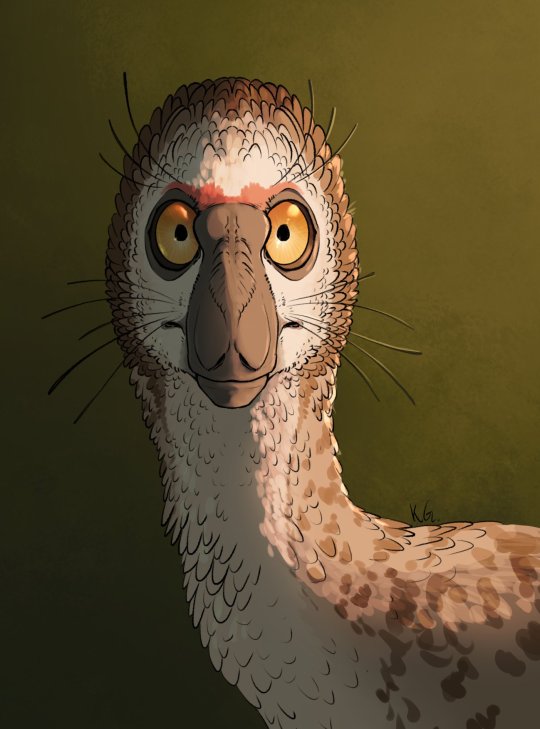
Troodon - @/the_meep_lord on Twitter
Troodon is a name that dino-nerds will bring up as a notable example of smart dinosaurs. It was one of the dinosaurs most closely related to birds, it had large eyes for its head, and in fact the largest brain to body size ratio of any non-avian dinosaur. But what many dino-nerds might struggle with, is that most palaeontologists believe that the genus Troodon is not valid.
Now when I first heard this information, my reaction was likely the same to yours reader. What do mean the genus isn't valid? Ask anyone what Troodon looks like, we have a very clear picture. How can we have full skeletons of a dinosaur that didn't exist? How come we have a significant clade of dinosaurs named after it (Troodontidae)? It is a dinosaur that even had unfortunate older stereotypes in its design (pictured below: the olive green smooth skinned Troodon that inspired the ugly Dinosauroid speculative biology thing).

llustration of Troodon - De Agostini Library (unable to find artist)
The issue, as I'll try to explain, was an unfortunate game of guesswork and generalisation across the Palaeontological community.
Discovery and Naming
In 1855, a single fossil teeth was found in Montana, USA. This was a particularly jagged tooth, and seemed to belong to some form of carnivorous or at least omnivorous reptile. It was named Troodon formosus meaning "wounding tooth, well formed". This tooth was originally classified as belonging to a lizard, so the genus Troodon was born.
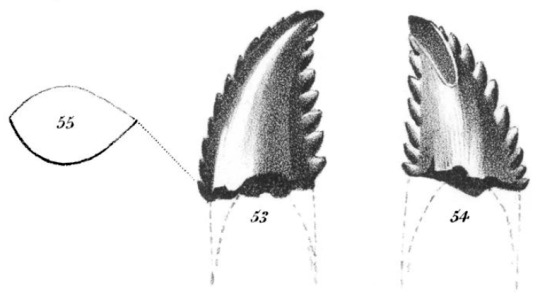
Troodon holotype drawing, 1860
In 1901, it was decided that Troodon's tooth belonged to a dinosaur, within the group Megalosauridae. But as I've discussed previously, Megalosaurus was a wastebasket taxon, and other experts wanted to place Troodon somewhere more definitive. In 1924, Troodon was classified as a relative of dome-headed dinosaurs such as Pachycephalosaurus and Stegoceras. And since Troodon pre-dated many dinosaurs in this group, the family was at the time referred to as Troodontidae.
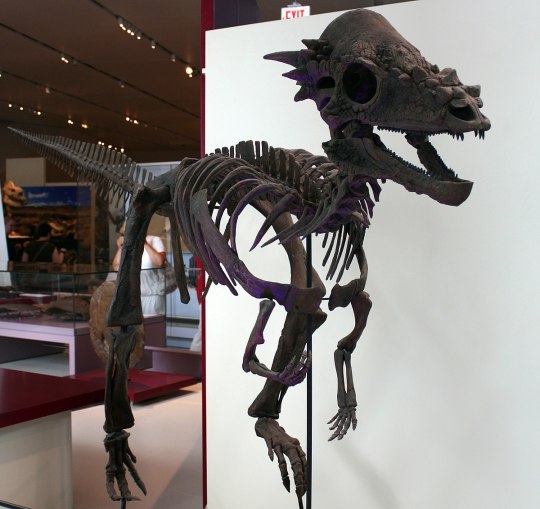
"Sandy", Pachycephalosaurus specimen at Royal Ontario Museum
Troodon as a Pachycephalosaur lasted until 1945, when Troodon was finally reclassified as carnivorous dinosaur, and the dome-headed dinosaurs were renamed under the title Pachycephalosauridae.
Other Troodontids
For a long time, the issue with Troodon was that because it's teeth were one of a kind, they did not know how the rest of it's body looked. The first dinosaur to be classified under Troodontidae that wasn't named just for teeth was a dinosaur called Stenonychosaurus (meaning 'narrow claw lizard").

Stenonychosaurus, Nix Illustration @alphynix
The original specimen of Stenonychosaurus did not have teeth, but it's close relative Saurornithoides did. And once both specimens had more complete specimens collected, they were classified under the group Saurornithoididae in the 1980s. But soon, scientists found similarities between the teeth of Saurornithoididae dinosaurs, and that of Troodon. The Principle of Priority states that earlier names for taxon are more valid taxonomically, so Saurornithoididae was considered synonymous with Troodontidae, and all specimens previously referred to as Stenonychosaurus were now called Troodon.

"Troodon" Specimen, Perot Museum, Texas
Most of the facts we now think of as Troodon were originally attributed to Stenonychosaurus, and many other North American Troodontids were considered as possible synonyms of Troodon, but this received some push back.
The idea that most of North America's Troodontids all belonging to one taxa was questioned. So, as had happened to other wastebasket taxon prior, Troodon was reanalysed.
In the late 2000s, a Troodontid called Pectinodon was separated from the Troodon genus and considered its own taxon. In the mid-late 2010s, some material originally classified under Stenonychosaurus, and then Troodon, was given its own genus, Latenivenatrix.

Latenivenatrix sculpture, @bookrat
Was "Troodon" really Troodon?
So the question of "What is a Troodontid?" had a very clear answer now. They were small to medium Theropod dinosaurs with narrow skulls, front facing eyes, larger braincases, and often restored with sickleclaws and feathers, similar to the Dromeosaurs. But the question came back to the Genus Troodon itself. We had sufficient material of many other Troodontids to tell what most of their body looked like, but the "holotype" of Troodon was still just one tooth.
In case you need a refresher on the terminology, a holotype is the first fossil a new species is named for. For another fossil to be named the same species, it needs to be identified as similar enough to the holotype. Holotypes are often fragmentary, it is common practice to fill in the full skeleton with details from similar relatives, but you still need enough details to identify who your relatives are.
The holotype of Troodon was so fragmentary, (again one bone), that it has been referred to as undiagnostic. Terminology lesson again, that means you CANNOT tell what it belongs to.

The fragmentary Holotype of the more recent Troodontid "Talos sampsoni", was almost complete in comparison to Troodon's. Credit: Scott Hartman
The Troodon tooth was *similar* enough to Stenonychosaurus that they were proposed to be close relatives, but there were differences enough for there to be initial scepticism at their synonymy. The original explanation proposed that the Troodon tooth came from an individual who was older, or in a different part of the mouth to teeth found from Stenonychosaurus, but this was never scientifically scrutinised, just proposed. The whole absorbing of Stenonychosaurus into Troodon was based on heresy that had never been scientifically tested.
So in 2017, almost universally, it was decided that Stenonychosaurus be separated from Troodon as its own valid dinosaur. Almost all material that had at that point been assigned to Troodon were reassigned to Stenonychosaurus or Latenivenatrix. And now the genus Troodon had a problem. If all known fossil material came down to a single, very undiagnostic tooth, then what WAS this dinosaur actually like?
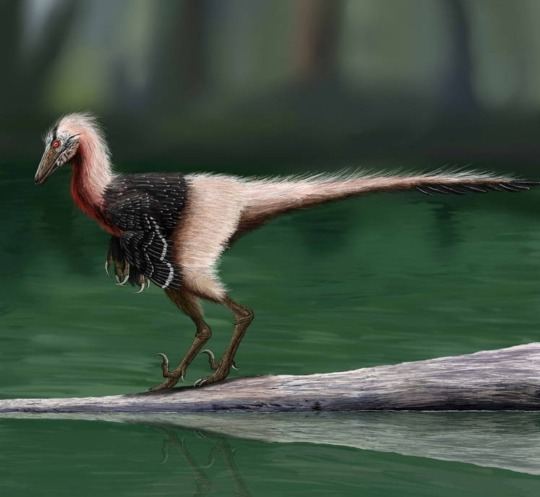
Stenonychosaurus - Anuperator (deviantart)
The current take is that there was no dinosaur known as Troodon in the technical sense. The tooth may not even belong to a Troodontid. But since Troodontidae has become an established group with established diagnostic traits, we still get to keep the name, for the group at least.
Troodontids Now
Troodontidae is still a very popular mainstream group of dinosaurs, but the names Stenonychosaurus, Saurornithoides, and Latenivenatrix are not as well known as Troodon. Many recent paleoart projects, particularly animations have depicted Troodon-like dinosaurs. But for scientific accuracy, they often decide to use the catch-all term "Troodontid", so audiences know what dinosaur we're talking about without being unscientific.
The YouTube Animation series "Dinosauria" features an episode on Arctic North American Dinosaurs. The main character is referred to as an Alaskan Troodon. This dinosaur has been originally proposed as a larger subspecies of Troodon described from larger teeth found in Alaska. As of writing, this Troodontid still does not an official description or scientific name.
youtube
In the 4th episode of the Apple TV+ series, Prehistoric Planet, we again see a dinosaur probably based on the Alaskan Troodon, this time just referred to as a "Troodontid".
youtube
In both pieces of media, the Troodontids engage in intelligent problem solving, but nothing on the level of what Jurassic Park would engage in. In Dinosauria, the Troodontid uses vocal mimicry. In Prehistoric Planet, it uses burning sticks to spread a wildfire. Both behaviours that different modern birds engage in, but may have been a stretch for what non-avian dinosaurs were capable of.
Thanks for Reading
If you are still a bit confused as to what this all meant, that's OK, it took me a while to get me head around it too. I encourage readers to do their own research and come to their own conclusion as to what this all means.
If you did feel my explanations helped you learn something new today, please reblog and spread the word. Of course add on your own commentary to the reblogs if you have insight that would better clarify the topic.
Thankyou for reading, and I'll hopefully have something else to post on here soon.
#blog#blogpost#palaeontology#dinosaurs#troodon#troodon formosus#stenonychosaurus#Latenivenatrix#Troodontidae#nomen dubium#theropod#Youtube#long post
79 notes
·
View notes
Text


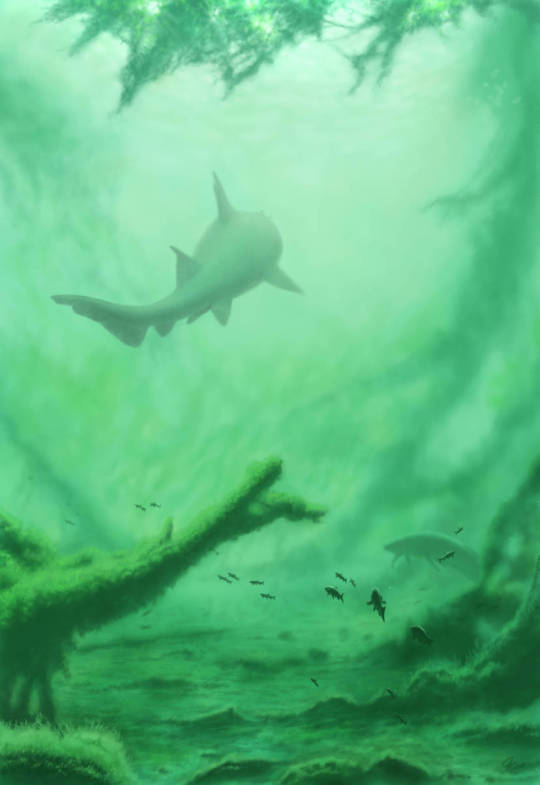



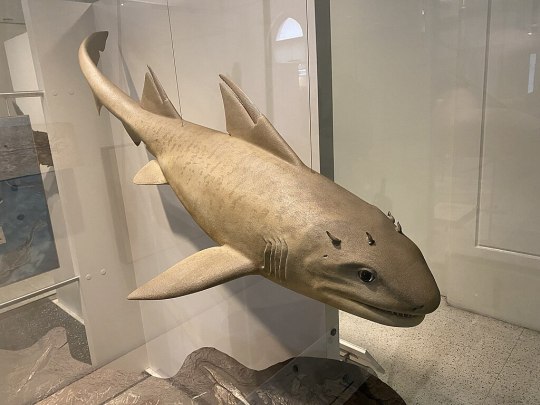
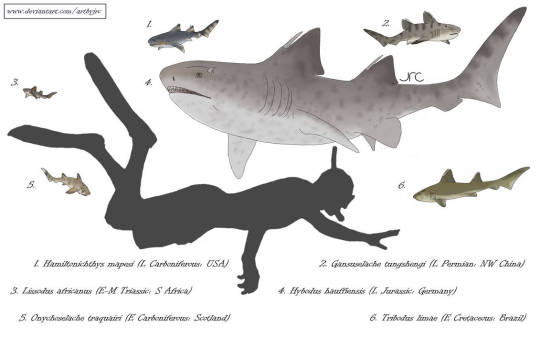
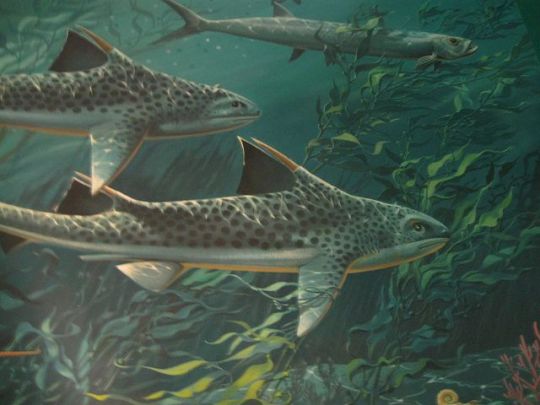
Hybodus is an extinct genus of hybodont shark-like cartilaginous fish which lived throughout much of the world’s marine, brackish, and freshwater environments from the Late Permian Period to the Late Cretaceous Period some 259 to 66 million years ago. The first known remains of hybodus consisting of various isolated teeth where collected and formally described from throughout Europe by Jean Louis Rodolphe Agassiz in 1837 whilst he worked on his five volume series: Research on Fossil Fish. He dumped the creature Hybodus meaning crooked or humped tooth in ancient greek. In the following centuries several more remains would be unearthed including spines, jaws, vertebrae, and even whole specimens. Because of this numerous species have been assigned to Hybodus with varying degrees of analysis and evidence unfortunately leading hybodus to become a bit of a wastebasket taxon which is current undergoing a broad amount of reexamination. As such the exact species count is uncertain. Although first believed to merely be an extinct example of a living shark family, in 1911 Dr. Zittel showed them to be there own distinct lineage which along with modern sharks and rays make up the the clade Euselachii. Reaching around 6.6 to 9.8ft (2 to 3m) in length, It possessed a streamlined body shape similar to modern sharks, with two similarly sized dorsal fins that would have helped it steer with precision. These fins where also lined with dentinous spines which exhibit a rib-like ornamentation located towards the tip of the spine, with rows of hooked denticles present on the posterior side. The spines may have played a role in defending the animal from predators. Hybodus is also unique in that these fish sported multiple different kinds of teeth each distinctly shaped, it is thought that Hybodus' varied dentition would have allowed it to opportunistically exploit a variety of food sources; sharper teeth would have been used to catch slippery prey, while the flatter teeth probably helped them crush shelled creatures.
Art featured can be found at the following links
7 notes
·
View notes
Text
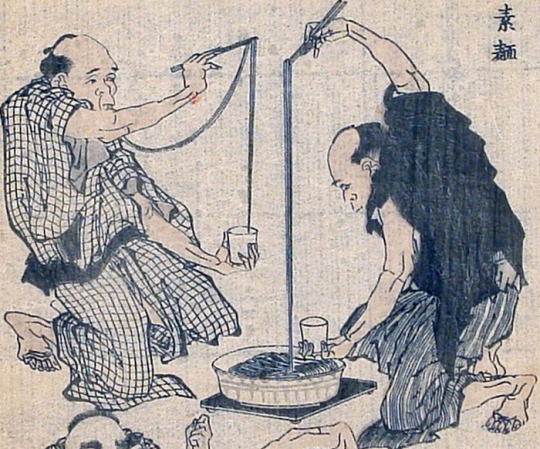
(Hokusai - Hokusai Manga Vol. 12, Men eating Noodles)
I recently came across the paper "Ancient DNA analysis of food remains in human dental calculus from the Edo period, Japan" by Sawafuji et al. (2020).
Researchers extracted DNA from dental calculus - that's the white stuff that forms on your teeth over time (and is generally removed if you go in for cleanings) - to study what people in the mid- to late-Edo period ate. To do this, they sampled calculus from 13 bodies dating to the 18th and 19th Century: 7 women and 6 men who lived in the city of Edo.
They found that they were unable to identify any type of animal taxon in the samples, so we don't know which fish or meats, if any, were eaten by the sampled individuals. So, not helpful in that regard.
However, they were able to identify the following:
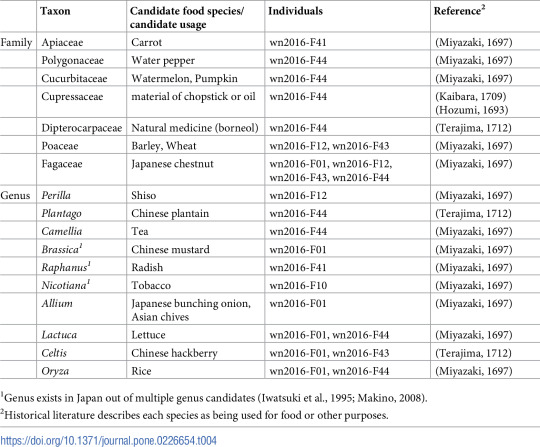
We already know (and the paper points this out as well) that the diet of Edo's townspeople primarily consisted of rice and vegetables, occasionally (or regularly, depending on your means) accompanied by various types of fish.
From the list above, we can then identify a few more of the ingredients these specific people ate: rice, as their main staple, but also soba or udon (made from wheat and barley). An assortment of different vegetables, such as carrots, chestnuts, shiso, and garlic chives. And tea, naturally.
Interestingly, the researchers also found some non-food items, specifically plant matter from the Cupressacea (cypress) family, borneol and tobacco.
Tobacco is perhaps self-explanatory: many people in Edo smoked (pipes, specifically), and it would be fair to say that this left some residue in their dental calculus.
Plant matter from the cypress family is more interesting. There are two types of trees native to Japan from that family, the Japanese cedar and the Japanese arborvitae, the kind of smallish conifer that grows all over Japan. This plant matter is most likely to get into peoples' mouths by using chopsticks and toothpicks made from those trees, but also by using the resin as a painkiller for toothaches.
And the borneol stands out because it comes from a tree called the Borneo camphor, which isn't native to Japan and also won't grow in Japan if you tried. Meaning that the borneol would have to be imported, which it had been for a few hundred years, from China.
People examined in this study most likely came into contact with borneol as a flavoring in tooth powder. Tooth powder at the time was primarily fine sand with added flavoring to, I suppose, improve the experience and set apart different "brands" sold in stores.
You can learn more about tooth powders, tooth brushes, and treating toothaches in the Edo period on the website of the Kanagawa Prefectural Dental Association (in English).
Additionally, borneol was used in many traditional kampo medicines in both Japan and China. I'm not very well versed in kampo medicines, but according to this website, it's used to aid the digestive system by stimulating the production of gastric juices, treat bronchitis, coughs and colds, relieves pain and reduces swelling, and can be taken as a tonic to promote relaxation.
12 notes
·
View notes
Note
I've never really had a strong interest in dinosaurs, but watching you be so passionate about them kinda made me curious.
Do you have any fun facts about them that you could share with me?
Of course! Thank you for asking! 💗
I love dinosaurs since childhood and I have never lost interest in them! 🥰
Here are some facts about them:
Birds are dinosaurs! All of them! They are more accurately called avian dinosaurs while dinosaurs living in the Mesozoic are called non-avian dinosaurs. While pterosaurs (like Pteranodon), marine reptiles (like Mosasaurus) and prehistoric synapsids (like Dimetrodon) are not dinosaurs!
Here is one basic fact: dinosaurs are in a clade called Archosauria (ruling reptiles; there are also crocodiles) and are divided into two major orders: Saurischia (reptile-hipped) where do Sauropodomorphs (long-necked dinosaurs like Apatosaurus) and Theropoda (bipedal mostly carnivorous dinosaurs like Tyrannosaurus and birds) belong and Ornithischia (bird-hipped) where other non-avian dinosaurs such as Triceratops, Stegosaurus, Pachycephalosaurus and Parasaurolophus belong.
Most media portray theropods with pronated wrists, which is actually incorrect because they would break their bones that way.
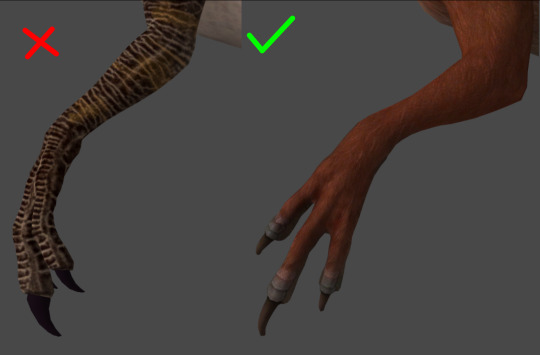
4. We know the coloring on some dinosaurs thanks to preserved feathers or skin! Here are some examples:
Anchiornis

Caihong

Microraptor

Sinosauropteryx
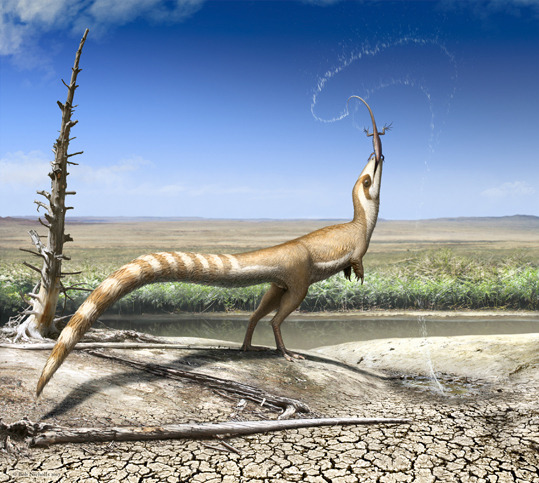
Psittacosaurus

5. Heterodontosaurids are one of the strangest and most underrated dinosaurs.


6. Fossils of dinosaurs and prehistoric animals are found in fragments. Whole skeletons are very rare because are mostly not preserved after millions of years. It is possible that some fauna and flora will never be discovered, because their fossils have not been preserved. 😢
Anyways here are some photos of beautiful fossils ☺️:
The Berlin specimen (Archaeopteryx siemensii)

'Fighting Dinosaurs' (Protoceratops andrewsi VS Velociraptor mongoliensis)
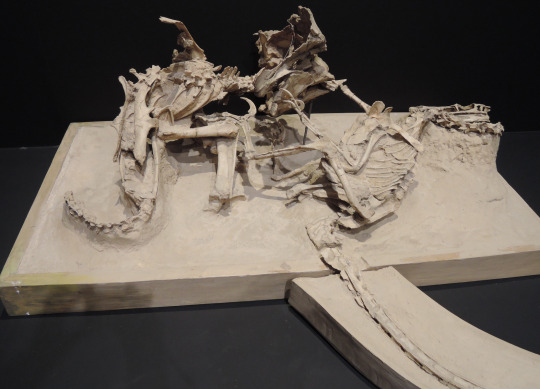
'Dinosaur Mummy' (Borealopelta markmitchelli)

SMF R 4970 (Psittacosaurus sp.)

FMNH PR 2081 'Sue' (Tyrannosaurus rex)

7. In the past, paleontologists thought that dinosaurs were giant, slow reptiles until the discovery of Deinonychus, which was more similar to birds.
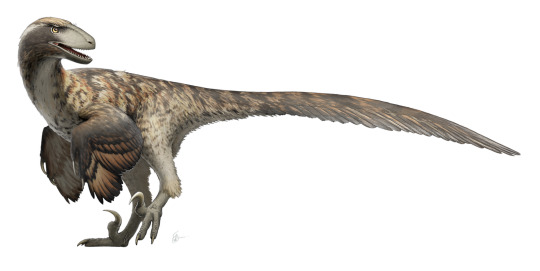
8. Troodon is a potentially invalid genus because it's known only to a single tooth and was used in the past as a wastebasket taxon for newly discovered organisms. Troodon could be Stenonychosaurus or Latenivenatrix.

9. Dinosaurs and prehistoric animals are constantly reconstructed when new fossils are found. The most famous (and infamous) examples are Iguanodon and Spinosaurus as the samples of how we see them today over the years.


10. A many hadrosaurids have various crests that are hollow and used to make loud noises. They are one of my favourite groups of dinosaurs.

That's all for today! 🥰
#sorry it took so long I was trying to find sources of artworks#fancysteawberrybeard#dinosaurs#tamiisnthere's ask
6 notes
·
View notes
Text
Mbiresaurus raathi Griffin et al., 2022 (new genus and species)

(Select bones and schematic skeletal of Mbiresaurus raathi [scale bars = 1 cm for most individual bones; 1 mm for “s”, an individual tooth; and 20 cm for the skeletal], with preserved bones in white, from Griffin et al., 2022)
Meaning of name: Mbiresaurus = Mbire lizard [in Greek]; raathi = for Michael Raath [South African paleontologist]
Age: Late Triassic (Carnian)
Where found: Pebbly Arkose Formation, Mashonaland Central, Zimbabwe
How much is known: Skeletons of at least two individuals, one of which is nearly complete. Some isolated femora (thigh bones) from the same region may also belong to this taxon.
Notes: Mbiresaurus was an early sauropodomorph. Although sauropodomorphs famously include gigantic, long-necked quadrupeds, the earliest members of this group, including Mbiresaurus, were relatively small (less than 2 m long), bipedal dinosaurs.
Other than the controversial Nyasasaurus, which is only known from fragmentary remains, Mbiresaurus is the oldest known dinosaur from Africa, and possibly one of the oldest known dinosaurs in the world. Dinosaur fossils of similar age have otherwise only been found in South America and India. The fossil sites where such early dinosaurs were discovered were all situated at high latitudes in the Southern Hemisphere during the Late Triassic, which may suggest that the oldest dinosaurs were restricted to this geographic region.
Reference: Griffin, C.T., B.M. Wynd, D. Munyikwa, T.J. Broderick, M. Zondo, S. Tolan, M.C. Langer, S.J. Nesbitt, and H.R. Taruvinga. 2022. Africa's oldest dinosaurs reveal early suppression of dinosaur distribution. Nature advance online publication. doi: 10.1038/s41586-022-05133-x
102 notes
·
View notes
Note
Okay but as a fellow bird obsessed person I NEED to know if you have a passing fixation on prehistoric raptors because that happened to me reccently where I went "man I learnt so much about birds...I need more" so I just started looking at beta birds fhdjsvjs
YES! SAME! but bro it was very much NOT in passing, i've been a theropod nerd since i was like seven years old.
i've been on the "MORE DINOS" propaganda juice for a while lmao. it's a pretty pervasive thing in my hermitcraft grian design (and by extension most other "avian" designs as well) because early raptor anatomy is just so much easier to blend with humans than modern birds
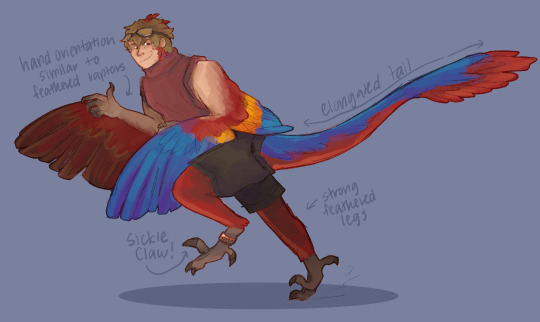
but yes! the entire saurian family tree is WILD. avian dinosaurs are popular ones but there are some fun relatives like toothed seabirds (pelagornithids) and the "opposite birds" (enantiornithes) that are just so fascinating.
they recently started reorganizing the troodon taxon too (as it was basically used as a catch-all for any raptors that didn't fit existing families and genus), so we might get even more prehistoric raptor groups in the future
i've just been latching onto PBS EONS videos for my avian dinosaur fix so far. but holy shit if you haven't, go watch Dead Sound's Dinosauria series and Making of follow-ups. he's an incredibly talented storyteller and is a god at integrating scientific fact with fiction. while he does cover all dinosaurs, not just avian ones, he's very knowledgable about the paleontology scene and i learned so much by just hearing him talk about the dinosaurs he was covering
#hermitcraft#grian#bird art#god dinos are just the best#you know youve reached critical bird nerd levels when birds just ARENT ENOUGH
139 notes
·
View notes
Text
WELCOME TO THE SABERTOOTH SHOWDOWN.
Saber-toothed (adjective): having long, sharp canine teeth
Admittedly, this is a fairly niche topic, so before actually constructing the bracket and releasing the matchups, I think it’s important to give a background for each taxon. That way, everyone will have at least a little bit of information to base their votes on!
The competitors will be organized at the genus rank, as many are extinct and there simply isn’t a whole lot we can infer about the variation between some species from only their fossils.
Each competitor will have a dedicated post including their overall ecological success, as well as my personal opinion of how they would rank in a tier list format. If you disagree with any of my arguments, please feel free to voice your opinion, as well as argue for the placement you feel is most appropriate for each competitor.
I will tag each background/rank post by the competitor’s genus, family, and class.
CURRENT COMPETITORS
There are currently 22 genera included in the tournament. Organized by family, they are as follows:
Felidae: Homotherium, Megantereon, Xenosmilus, Machairodus, Smilodon, Neofelis, Dinofelis
Nimravidae: Nimravus, Hoplophoneus, Dinictis, Quercylurus
Barbourofelidae: Barbourofelis
Oxyaenidae: Machaeroides
Thylacosmilidae: Thylacosmilus
Gorgonopsidae: Inostrancevia, Lycaenops
Lystrosauridae: Lystrosaurus
Anomocephaloidae: Tiarajudens
Stahleckeriidae: Lisowicia
Cervidae: Hydropotes
Cercopithecidae: Papio
Uintatheriidae: Uintatherium
If you have a genus in mind that you think should be included, please submit it, as well as your personal appraisal of their rank!
6 notes
·
View notes
Text
Symmetrodonts: A Missed Opportunity
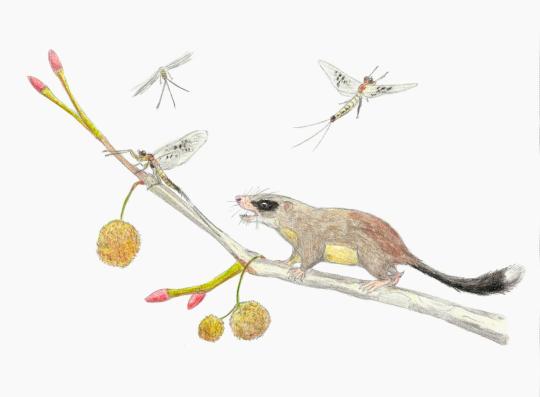
Chronoperates paradoxus by Diego Ortega Anatol.
Symmetrodonts are a group of mammals that is distinguished by, what else, semi-symmetrical molar tooth cusps – an in-between between the triconodont condition of earlier synapsids and the more complex cusps of more derived mammals. Most of the clade seems to be a wastebasket taxon, but a clade with more triangular molars seems to form a genuine genetic clade, relatively closely related to therians and lasting from the Early Cretaceous to possibly the Paleocene in the form of Chronoperates paradoxus.
Symmetrodonts included some of the smallest mammals of all time, and complete specimens show hallmarks of early mammals such as tarsal spurs like those of the platypus as well as epipubic bones, and we can infer that like other non-placental mammals they had a cloaca and two-headed penises. They were mostly insectivorous, living up to the stereotype of tiny mammals among dinosaurs.
In Multituberculate Earth, their fate was slightly better than in our timeline. During the Paleocene and Eocene they diversified as small insectivores much as before, but in Europe and Balkanatolia in particular some forms attained larger sizes, including otter-like swimmers and badger like predators. But their success was rather limited; with the Grand Coupure, these island continents were invaded by Asian competitors alongside a disruption of their forest habitats, and alongside their more conservative North American cousins they perished.
This goes to show that, even in this timeline, some groups just aren’t lucky enough for the long run.
5 notes
·
View notes
